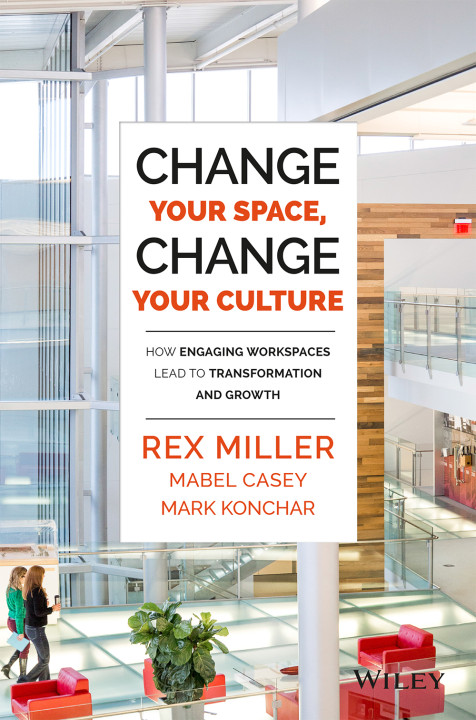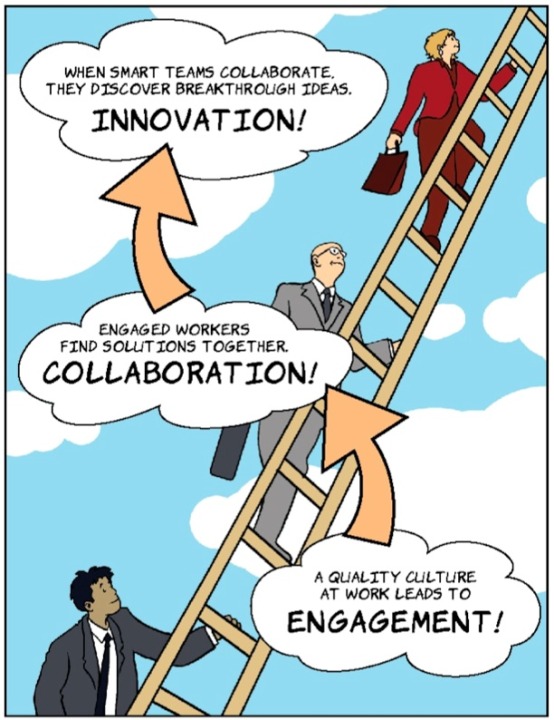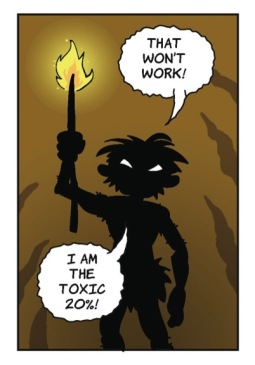Rex Miller joined us last week to present our September webinar, “Change Your Space, Change Your Culture: How Engaging Workspaces Lead to Transformation and Growth,” sponsored by Tandus Centiva. His new book, by the same name, was published last week and is available on Amazon. Check it out here.

Rex Miller and a team of thirty-five companies have spent the past two years researching the effects that workspace has on company culture. They called themselves the Case4Space, and their work has culminated in a new book, Change Your Space, Change Your Culture: How Engaging Workspaces Lead to Transformation and Work.
“We felt we needed to change the conversation in our industry about the things that matter most,” said Miller. “We wanted to talk about engagement, we wanted to talk about culture, and we wanted to connect that to the environments that we work in.”
During the webinar, Miller used comic book illustrations to identify some of the biggest problems that they found are affecting today’s workplaces, along with examples of what solid workplace cultures really look like. Full copies of the comic book are available in participating Haworth showrooms; highlights from the presentation are below.
The innovation ladder

“When teams collaborate and discover breakthrough ideas, they innovate,” said Miller. “But it’s dependent on a collaborative environment, and collaboration is dependent on engagement. The [IBM CEO] survey defines engagement as the ‘discretionary decisions that people make that go above and beyond their job.’ In other words, if I’m in a meeting and I feel that there is something left off the table, I make a decision: am I going to speak up?”
The “OMG factor”
“One of the surprising statistics that we ran into was Gallup’s workplace engagement survey,” said Miller. “This last year, [they found] that seventy percent of American employees are disengaged. That’s seven out of ten.”

“We just didn’t believe this could be true at first,” said Miller. “And then we went from ‘no way’ to ‘no wonder ’ and then we said ‘no longer’. We called these numbers the ‘OMG factor’. If companies have seventy percent of workers checked out, how in the world can they be innovative?”
CAVE Dwellers
“CAVE” dweller was Case4Space’s acronym for employees who are “consistently against virtually everything.”
“Twenty percent of the workplace you are better off paying to stay home then to come to work,” said Miller. “And you know exactly who these people are.”
According to Gallup, this “toxic twenty percent” costs American businesses up to $550 billion per year. “Add that other fifty percent just going through the motions,” said Miller, “and it’s no wonder that business is in a challenging position.”
Ok, this is scary. So what does great workplace culture look like?
Miller said that some of the best change initiatives they witnessed where within companies recognized that a good bit disengagement in their workplace, and then used the built environment as a key part of their strategy for transforming them.
Here are the three types of companies that, in the case4space’s opinion, have their priorities straight:
Established engaging cultures.
These are long-time established organizations with great cultures. C4S asked companies like this, “What’s your philosophy about culture, what’s your strategy about space, and how are the two related?”
- “At WL Gore in Delaware, there is a very intentional dynamic about keeping things small. Every business unit is made up of no more than 150, plus or minus, people in the same work environment,” said Miller. “That’s based on a sociological number called Dunbar’s Law that when you get over 150 people you start losing community.”
- “There’s also no hierarchy at Gore: you have a business unit leader and everybody else is an associate,” he said. “It’s a highly egalitarian, highly merit-based culture; 16,000 employees and it’s been in place for over eighty years.”
- “Space was a very big part of creating an informal, ad hoc feeling: we’re all equal.”
New era engaging cultures.
“These are companies with engaging cultures born in this information age with an innate understanding of what working in a network world where information and talent and creativity is the primary medium of exchange,” said Miller. They instinctively know how to create environments that engage people to give their best.
- Examples include companies like Google, Zappos, and Carfax.
- “David Radcliffe, head of CRE for Google, said that their primary mission in his department is to reduce the friction of work,” said Miller. “That means not just in the workplace, but they look upstream to the work and life integration, even the commute to Mountainview.”
Transforming a static legacy culture.
“These companies saw that their culture wasn’t going to get them further,” said Miller. “Many companies are recognizing that the way we used to get things done — certain people entitled with big offices, [the hierarchy, in other words] — is getting in the way of us being collaborative and transparent.
In the book, Miller includes three case studies of companies that transformed their culture using space as the primary catalyst.
The unique factor
In the end, the best way to identify and then capitalize on your company’s culture is to identify what makes it stand out from the rest.
“Michael Vance said that, ‘Nobody wants to go to ‘kind of like Disney’’ — they want to go to Disney and have the Disney experience,” said Miller. “The challenge we’ve had is that we bring in great concepts to users and owners and we say, ‘Ok. Is it kind of like this picture from Google/Bloomberg/etc.?’, and hope that the client picks one of those options and then we work off of that.”
But that’s not quite right. If you really want your space to change your culture, Miller said, “The first place you start is from the inside, and understand the client through their lens, and design from the inside out.”


